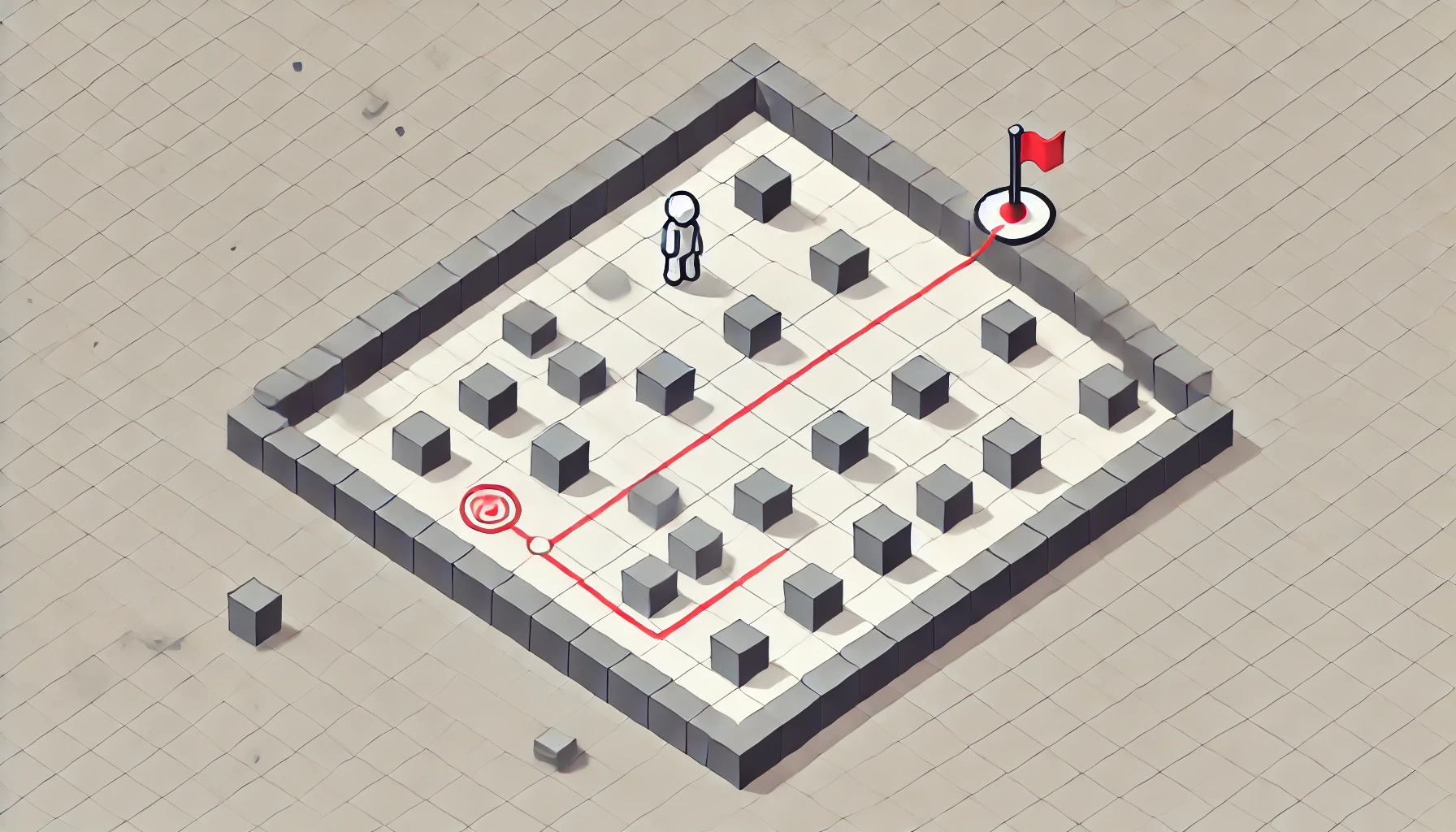
January 17, 2025
Implementing AI Pathfinding with A Algorithm in a Grid-Based Game
How can video game characters navigate mazes, obstacles, and confusing settings? Did you ever give it a shot? It's all because famous and effective, the A* algorithm which is vital for pathfinding. So, let us understand how A* works and how to apply it to a grid-based game.
Understanding A* Algorithm
Strong A* discovers the shortest map route between a start point and a destination while avoiding obstacles. Dijkstra's algorithm and heuristics help A*. A path's total cost is g-cost (the start node cost), h-cost (a heuristic estimate of the goal distance), and f-cost (g + h). A* selects the best path without examining distant routes by analyzing nodes based on these values.
Setting Up the Grid
A* implementation requires a grid-based game map. Algorithms explore walkable grid cells for the optimum target approach. Let's discuss a simple Python grid initialization:
grid_width, grid_height = 10, 10
grid = [[' ' for _ in range(grid_width)] for _ in range(grid_height)]
Each cell in this 10x10 grid is started as a blank area, symbolizing walking ground. Marking cells as obstacles ('#') and starting (S) and goal (G) points is possible later.
Implementing A* in a Grid-Based Game
After creating our grid, let us implement A*. Here are the general steps:
- Initialization: Add start and goal nodes to the open list of nodes to investigate.
- Node Expansion: Calculate surrounding nodes' g-cost (starting distance) and h-cost (heuristic target estimate). Include them if they are not on the open list or a better route appears.
- Path Reconstruction: After reaching the goal, recreate the path by following parent nodes back to the start.
Here's a simple implementation of the A* algorithm in Python:
class Node:
def __init__(self, x, y, g, h, parent=None):
self.x = x
self.y = y
self.g = g # Cost from start
self.h = h # Heuristic estimate to goal
self.f = g + h # Total cost
self.parent = parent
def a_star(start, goal, grid):
open_list = [start]
closed_list = []
while open_list:
current_node = min(open_list, key=lambda node: node.f)
if current_node == goal:
# Path found, reconstruct path
path = []
while current_node:
path.append((current_node.x, current_node.y))
current_node = current_node.parent
return path[::-1]
open_list.remove(current_node)
closed_list.append(current_node)
for neighbor in neighbors(current_node, grid):
if neighbor in closed_list:
continue
tentative_g = current_node.g + 1 # Assuming uniform cost
if neighbor not in open_list or tentative_g < neighbor.g:
neighbor.g = tentative_g
neighbor.h = heuristic(neighbor, goal)
neighbor.f = neighbor.g + neighbor.h
neighbor.parent = current_node
if neighbor not in open_list:
open_list.append(neighbor)
return [] # No path found
Optimizations and Enhancements
We can use a priority queue (min-heap) to manage the open list and identify the node with the lowest f-cost to speed up the A* algorithm. Heuristics like Manhattan distance or diagonal distance can also be changed to work better with specific types of maps.
Conclusion
The A* algorithm for grid-based AI pathfinding is flexible and efficient. It finds the best path without excessive investigation by balancing movement cost with heuristic estimations. Try A* in your game and see your AI explore any map flawlessly!
683 views
